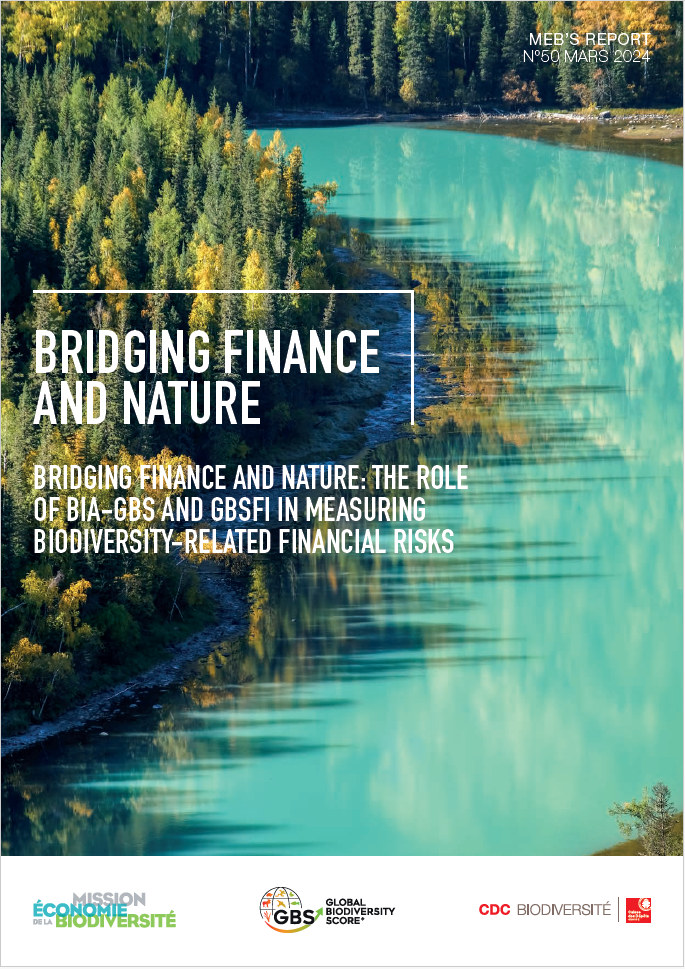Dossier de la MEB n°50

Sommaire de la publication
1.1 The emergence of the Global Biodiversity Score as a solution for financial players
2.1 BIA-GBS, a database on listed assets in partnership with Carbon4 Finance |
3.1 Screening non-listed portfolios’ biodiversity footprint with the GBS
4.1 Measuring biodiversity-related risks: a wide range of metrics needed
5.1 Analysis of the impact of a STOXX Europe 600 portfolio on biodiversity using BIA-GBS |
RÉSUMÉ
Bridging finance and nature: the role of BIA-GBS and GBSFI in measuring biodiversity-related financial risks
Why should financial players embody their crucial role in reversing the erosion of biodiversity by measuring biodiversity-related financial risks? How can financial institutions measure impacts and dependencies of the assets they finance. How GBS-linked solutions can help to cover all asset classes, so that all financial actors may take action?
CDC Biodiversité is developing comprehensive and specific solutions for financial players which seeks to answer these questions. Firstly, to meet the specific need of financial institutions for accurate biodiversity data on listed assets portfolios, the Biodiversity Impact Analytics powered by the Global Biodiversity Score (BIA-GBS) database was launched in July 2021 in partnership with Carbon4 Finance, a pioneer and leader in climate data and methodologies. Several methodologies have also been developed by CDC Biodiversité to extend the coverage of biodiversity footprint measurement to a wider range of financial assets.
This first report on bridging finance and nature provides explanation and illustrations on the various applications of the Global Biodiversity Score (GBS) for the financial sector (listed or private equity, banking activities, infrastructure financing…). It also describes the role of the GBS in the measurement landscape: how should it be used in combination with other tools and how does it comply with various standards and regulations. Finally, it shares results of specific case studies, like the one on, “How BIA-GBS can be used to disclose in line with the TNFD framework? The case of agriculture and fisheries in Europe”.


